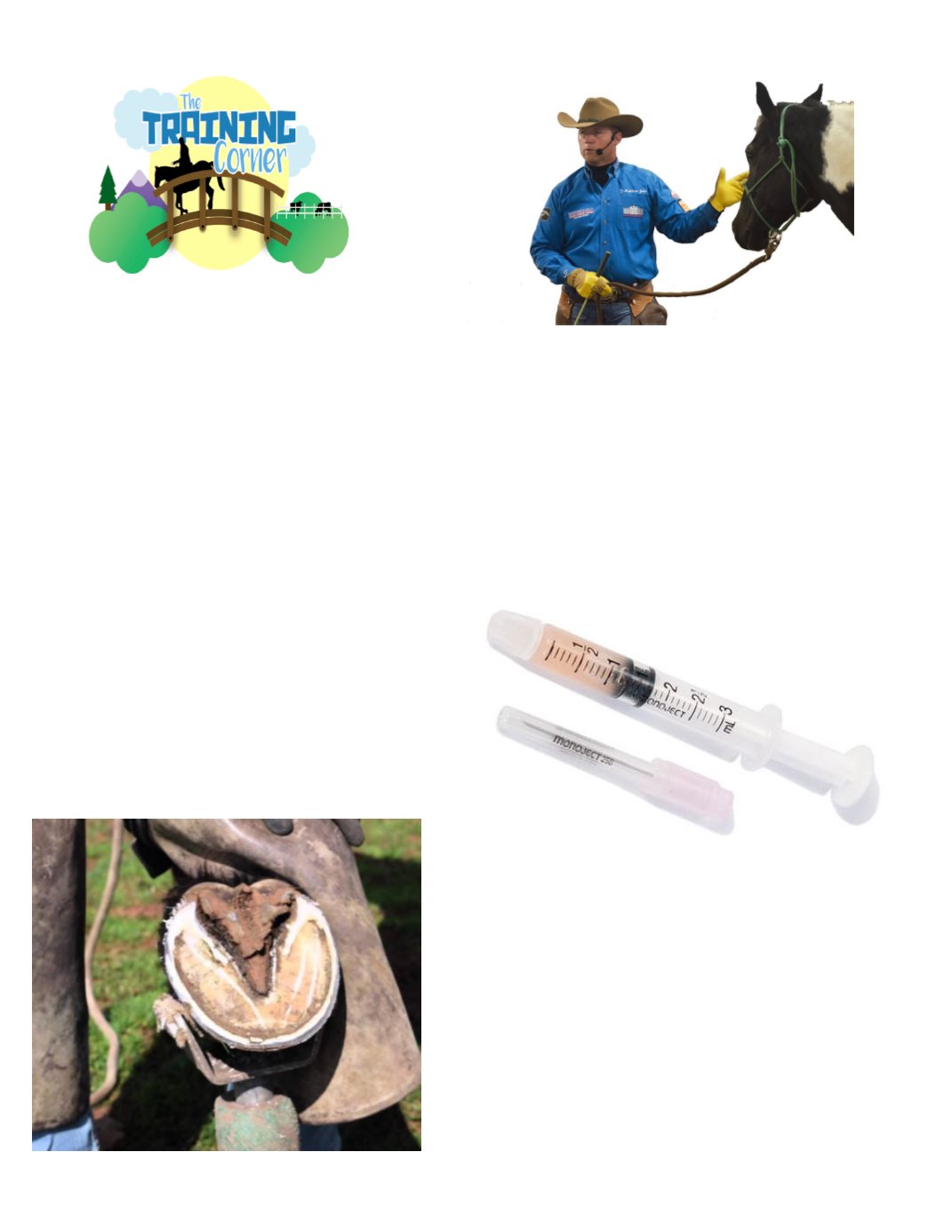

Everything Horses and Livestock Magazine ®
©Everything Horses and Livestock®
|
November 2017
|
EHALmagazine.com
8
Featured Writer Matthew Jobe
SETTING YOUR HORSE UP FOR SUCCESS...
Before Sending them to the Trainer
Here are some “Minimums” to Do;
Your horse needs to be in good flesh. Determining
an ideal weight for a horse is difficult, in part due
to vast breed differences. A horse too fat will have
a hard time getting worked very hard or long in
the beginning until it tones up. It is more difficult
to work an underweight horse hard and feed them
enough to get into shape. Having your horse in
good weight will allow the trainer to start working
immediately.
Ensure hoof care is current. Whether trimmed or
shod a horse needs sound feet before a trainer
can train them. Hoof care is more than the farrier’s
responsibility. Simple things like the ground
conditions they are standing in, keeping hooves
clean, and healthy feed (we prefer Total Equine!)
as well as regular farrier visits will keep your
horse’s hooves healthy and your horse ready to
perform.
Each barn/training facility may have different
requirements for vaccinations. Vaccines can
prevent, or lessen illness from a potential infection
or infectious diseases, but the tricky part is vaccine
selection. Vaccination is not “one size fits all.”
These decisions are based on risk of exposure
to the diseases, the consequence of a specific
disease, the effectiveness of the product, and
potential adverse effects. A vaccination program is
really designed to protect all the horses your horse
comes into contact with as well as themselves.
Also, vaccination is not a remedy for poor
management. Discuss which vaccines are right for
your horse with your veterinarian.
De-worm your horse at least 7 days prior to taking
them to the trainer. A fecal count is the best way
to determine the type of de-wormer to use. Fecal
testing is the cornerstone of modern parasite
control. Targeted deworming is actually less work,
less expensive and more effective. The goal is
parasite control, not complete eradication. You
Continued Page 26
















